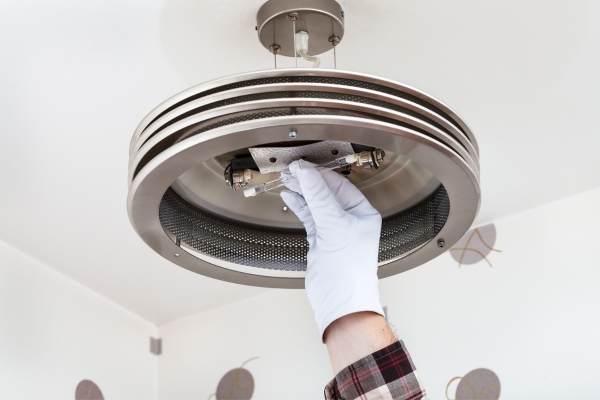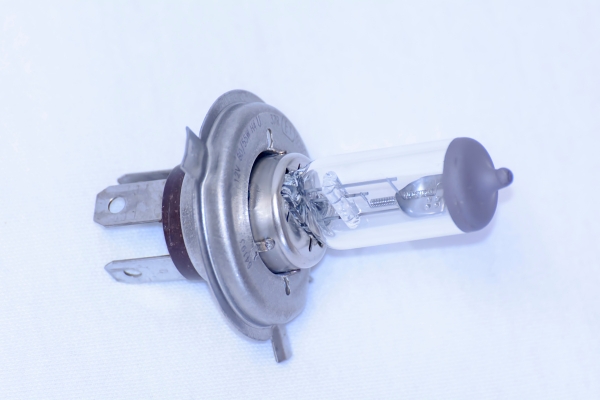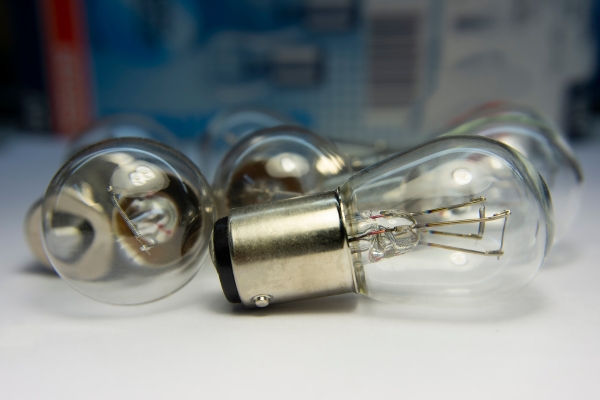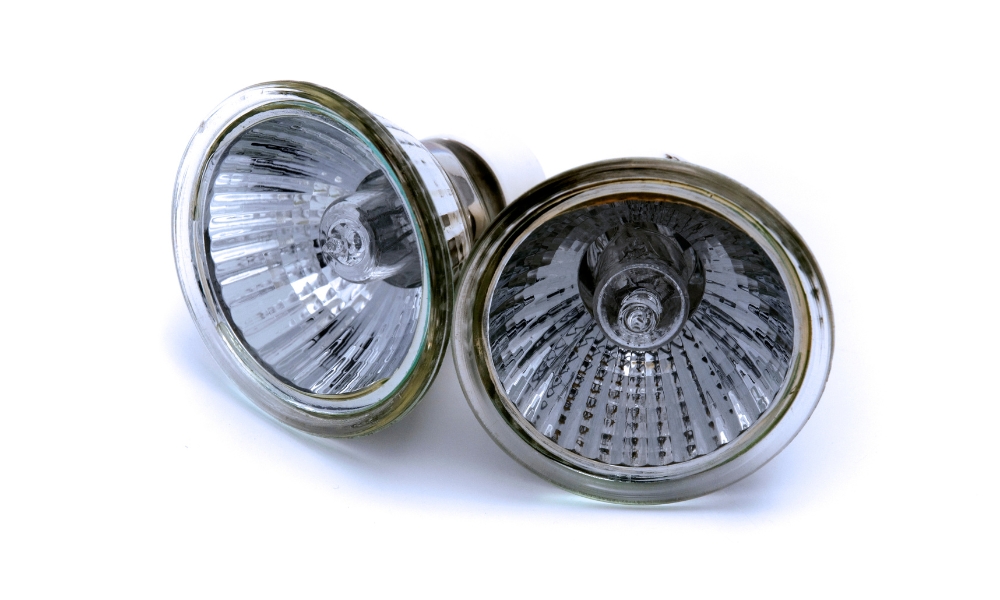Halogen lamps, a type of incandescent lighting, have become widely popular due to their efficiency and bright illumination. These lamps utilize a halogen gas to increase light output and improve energy efficiency compared to traditional incandescent bulbs. The compact size and brilliant white light of It make them ideal for various applications, including residential, commercial, and automotive lighting. By operating at higher temperatures, halogen lamp produce a crisp, clear light that enhances visibility and aesthetic appeal. Understanding what halogen lamps are can help in choosing the right lighting solution for different needs and environments.
What Are Halogen Lamps Used For?
Halogen lamps are versatile and widely used in various settings due to their bright, white light and compact size. In residential environments, they are often employed in task lighting, accent lighting, and in fixtures like desk lamps and track lighting. Commercially, It is favored in retail stores, galleries, and offices for their ability to provide clear, focused illumination that enhances the appearance of products and spaces. Additionally, It are extensively used in automotive lighting, providing headlights with superior brightness and longer lifespan compared to traditional incandescent bulbs. Their use in stage and studio lighting also underscores their importance in settings requiring precise and intense lighting.
Are Halogen Lamps Energy-Efficient?
While halogen lamps are more energy-efficient than traditional incandescent bulbs, they are not as efficient as modern alternatives like LED or CFL bulbs. It operate at higher temperatures, which allows them to produce more light per unit of energy consumed. This makes them about 20-30% more efficient than standard incandescent bulbs. However, their energy efficiency still lags behind LEDs, which can be up to 80% more efficient. Despite this, It are often chosen for their superior light quality and color rendering, making them a popular choice in applications where these attributes are prioritized over energy savings.
How Halogen Lamps Work
Halogen lamp function through a process similar to traditional incandescent bulbs but with some key differences that enhance performance. Inside a haloge lamp, an electric current passes through a tungsten filament, heating it to a high temperature until it glows and emits light. The halogen gas within the bulb, typically iodine or bromine, creates a chemical reaction with the tungsten vapor. This reaction redeposits evaporated tungsten back onto the filament, significantly extending its life and maintaining the clarity of the bulb. This recycling process allows the lamp to operate at higher temperatures, resulting in a brighter and more efficient light output compared to conventional incandescent lamps.
Types of Halogen Lamps
1. Miniature Halogen Lamps
2. Reflector Halogen Lamps
3. Halogen Capsule Lamps
Advantages of Halogen Lamp

1. Brightness and Light Quality
It are renowned for their bright and crisp white light, which closely resembles natural daylight. This superior light quality enhances visibility and color rendering, making it ideal for tasks requiring precise detail and clarity.
2. Energy Efficiency
Compared to traditional incandescent bulbs, It are more energy-efficient, consuming about 20-30% less energy while providing the same amount of light. This efficiency translates into lower electricity costs over time.
3. Longer Lifespan
The halogen cycle, where evaporated tungsten is redeposited onto the filament, extends the life of It. This recycling process helps maintain light output and clarity over a longer period, reducing the frequency of bulb replacements.
4. Compact Size
It are available in a variety of compact sizes and shapes, making them suitable for a wide range of applications, including those with limited space. Their small form factor allows for greater design flexibility in lighting fixtures.
5. Instant Light
It provide instant full brightness as soon as they are turned on, unlike some energy-saving bulbs that may take time to reach full intensity. This makes them convenient for applications where immediate illumination is necessary.
Disadvantages of Halogen Lamp

1. Heat Production
One significant drawback of It is their high heat output. They operate at higher temperatures than many other types of bulbs, which can pose a burn risk and may also affect the cooling requirements of the surrounding environment.
2. Energy Efficiency Compared to LEDs
While more efficient than traditional incandescent bulbs, It are not as energy-efficient as LED bulbs. LEDs can use up to 80% less energy than It, making them a more cost-effective and environmentally friendly option in the long run.
3. Shorter Lifespan Compared to LEDs
Although It last longer than incandescent bulbs, they still have a shorter lifespan compared to LEDs. This means more frequent replacements, which can be inconvenient and more expensive over time.
4. Environmental Impact
It contains halogen gases, which, while not harmful in small amounts, do pose environmental concerns if not disposed of properly. Additionally, their lower energy efficiency compared to LEDs contributes to higher overall energy consumption and carbon emissions.
5. UV Emission
It emits a small amount of ultraviolet (UV) radiation, which can be harmful to skin and eyes with prolonged exposure. UV emissions can also cause fading of fabrics and artwork over time, making them less suitable for certain applications.
Common Uses of Halogen Lamp

1. Residential Lighting
Halogen lamp find extensive use in residential lighting applications due to their versatility and bright illumination. They are commonly used in ceiling fixtures, pendant lights, wall sconces, and table lamps to provide ambient lighting, task lighting, and accent lighting in various rooms throughout the home. Their ability to produce a warm, inviting glow makes them popular choices for Put Lamps In Living Room, bedrooms, kitchens, and dining areas.
2. Automotive Lighting
Halogen lamps have long been a staple in automotive lighting systems, particularly for headlights and fog lights. Their intense, focused beams improve visibility for drivers, enhancing safety during nighttime driving and adverse weather conditions. Halogen bulbs are relatively easy to replace and are widely available, making them a cost-effective option for vehicle manufacturers and consumers alike.
3. Stage and Studio Lighting
In the entertainment industry, halogen lamp are valued for their high color temperature and excellent color rendering properties, making them ideal for stage and studio lighting. They are used to illuminate performers, sets, and props with bright, natural-looking light that enhances visibility and captures vivid details. It are often employed in theater productions, television studios, film sets, and photography studios to achieve professional-quality lighting effects.
4. Outdoor and Landscape Lighting
Halogen lamps are well-suited for outdoor and landscape lighting applications due to their ability to withstand harsh weather conditions and provide bright, focused illumination. They are commonly used in spotlights, floodlights, pathway lights, and garden lights to highlight architectural features, landscaping elements, and outdoor living spaces. It can create dramatic effects, accentuating the beauty of gardens, trees, statues, and water features while also improving safety and security around residential and commercial properties.
Are Halogen Lamps Safe to Use?
Halogen lamps are generally safe to use when handled and installed correctly. However, there are some safety considerations to keep in mind:
1. Heat Emission: It operate at high temperatures, and their bulbs can become very hot during use. Care should be taken to avoid touching the bulb or any nearby surfaces while the lamp is in operation to prevent burns or fire hazards.
2. UV Emission: It emit a small amount of ultraviolet (UV) radiation, which can be harmful to skin and eyes with prolonged exposure. It’s advisable to avoid direct exposure to the light and use appropriate shielding or filters if necessary, especially in applications where people are in close proximity to the lamps.
3. Electrical Safety: Like any electrical appliance, It should be installed and maintained according to manufacturer instructions and local regulations to prevent electrical hazards. Inspect cords, plugs, and fixtures regularly for signs of damage, and avoid using lamps with frayed cords or exposed wiring.
4. Compatibility with Fixtures: Ensure that It are used with fixtures specifically designed for their wattage and voltage ratings. Using lamps with incorrect fixtures or exceeding the maximum wattage can lead to overheating and other safety risks.
Conclusion
Halogen lamps offer several advantages, including bright illumination, energy efficiency, and versatility in various applications such as residential lighting, automotive lighting, and outdoor lighting. While they are generally safe to use, precautions should be taken to mitigate potential risks associated with heat emission, UV radiation, and electrical hazards. By following proper installation and maintenance guidelines, users can enjoy the benefits of It while minimizing safety concerns.
